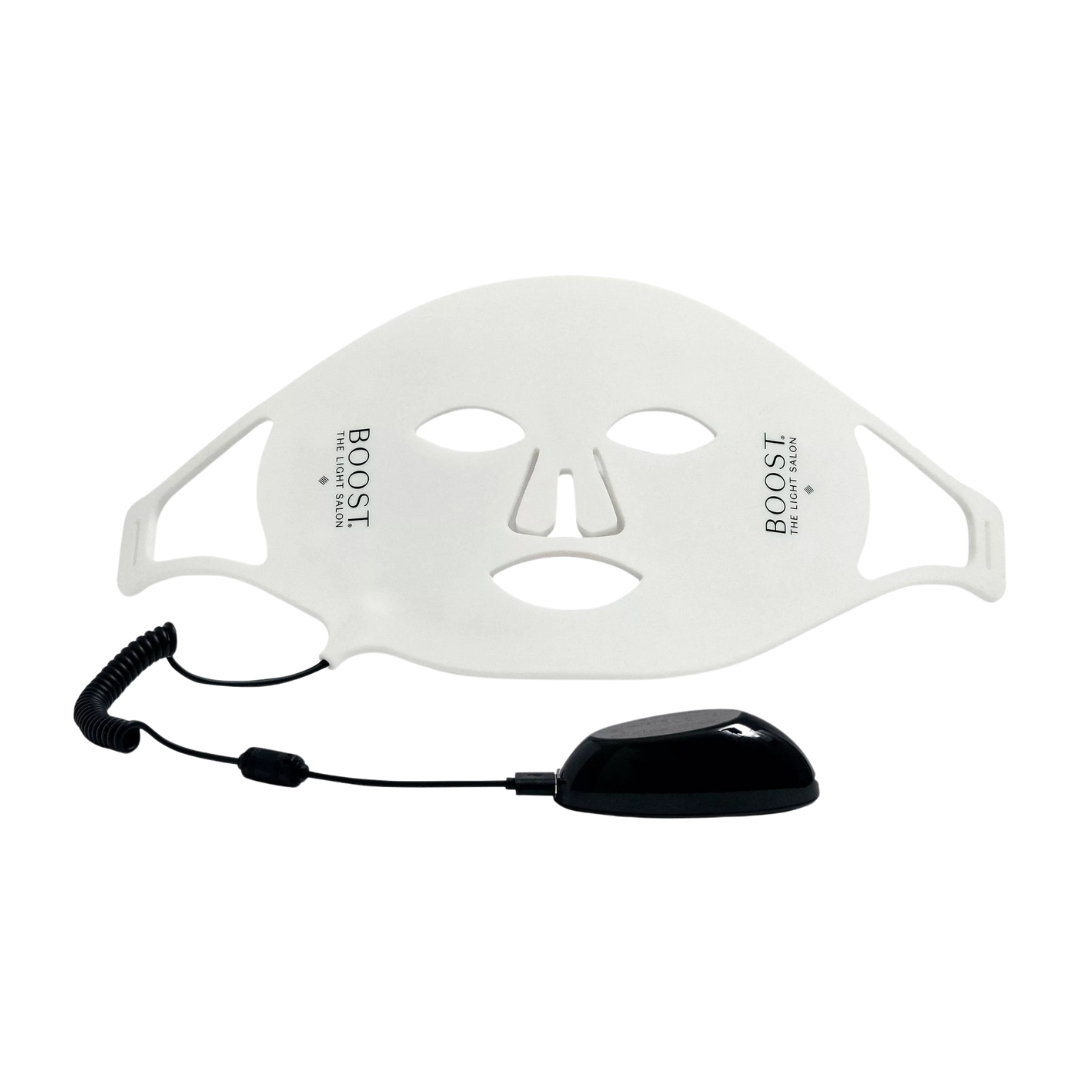Infrared vs red light therapy: what’s the difference and which should you be using for your skin?
As a beauty editor who loves using light masks, I spoke to the experts to determine the answers to all your questions


The world of LED tools in beauty can feel like a minefield. Unless you’re a scientist, understanding which kind of light does what and how you should use that to your advantage may just give you a headache – I can admit, even as a beauty editor of 10 years, it did me.
This is why I wanted to dive deeper into light therapy to determine which I should be focusing my attention on and how. I spoke with experts from renowned light therapy brands who make tools like the best red light therapy devices, along with expert skin doctors, to get all the answers you’ve been seeking around red and infrared light. And don’t worry, you don’t need to have a university degree in dermal science to understand...
Infrared vs red light therapy: experts explain the similarities and differences
What are the differences between infrared and red light therapy?
The most important thing to understand about these two forms of light therapy are that they have differing make-ups which mean they work slightly differently. What I mean by this is that each has its own individual wavelength range, which affects how deeply it can penetrate into skin and beyond.
Red light therapy, for example (which is on the visible light spectrum), works mostly at the dermis and epidermis of the skin. “It typically operates in the wavelength range of 600 to 650 nanometers(nm), penetrating the skin’s surface, and is primarily absorbed by the outer layers,” explains CurrentBody founder Laurence Newman. “633 nm is the gold standard for red light."
"Infrared light therapy [instead on the infrared light spectrum] operates in the longer wavelength range of 800 to 1200 nm,” he continues, with 830 nm being the most effective. This means it can “penetrate deeper into the skin, reaching the muscles, tissues, and even joints.”
What are the benefits of red light therapy vs infrared?
Because of this difference in makeup, these two forms of light have their own sets of benefits. Red light therapy’s main function for skin relates to our collagen levels, says Dr Maryam Zamani, Oculoplastic Surgeon, Facial Aesthetics Doctor and founder of MZ Skin. Collagen “is a key protein responsible for skin elasticity and firmness,” she explains. “As we age, collagen production decreases, leading to wrinkles and fine lines. Red light therapy can help promote collagen synthesis, which reduces the appearance of deeper wrinkles over time.”
In addition, red light therapy offers the prospect of improved skin texture “by increasing blood circulation and enhancing oxygen and nutrient delivery to skin cells,” as well as smoother, more radiant skin and less inflammation or redness, thus aiding conditions such as rosacea, eczema and psoriasis.
Sign up for the woman&home newsletter
Sign up to our free daily email for the latest royal and entertainment news, interesting opinion, expert advice on styling and beauty trends, and no-nonsense guides to the health and wellness questions you want answered.
As infrared light can penetrate more deeply, it has its own key set of benefits. Like red light, it has a positive impact on collagen production, skin texture and tone, and wrinkle reduction – but that's not all. “Infrared therapy works by delivering deep, penetrating heat into the body,” say founders of The Light Salon Hannah Measures and Laura Ferguson. “It enhances circulation, relaxes muscles and promotes detoxification by stimulating sweat glands. This thermal effect helps alleviate pain, reduce muscle tension and improve overall relaxation.”
How do you know if your skin would benefit from infrared or red light therapy more?
So we’ve established that red light and infrared have differing make-ups and benefits, but how do you know which you should be using for your skin if you’re interested in light therapy? Well, according to the experts you actually don't have to choose, usually.
“If you are focused on rejuvenating your skin, tackling fine lines, or improving overall complexion, you really want that combination of red and near-infrared [note: near-infrared is a section of infrared light that features wavelengths closest to the visible light spectrum red light sits in; infrared and near-infrared are terms often used interchangeably within beauty],” says Newman. “Having both allows you to work on overall skin health.”
Dr. Zamani agrees: “While independently these wavelengths of light show statistically significant improvements in skin, when used together there is greater efficacy. Often both the red and infrared wavelengths are used in combination to have greater efficacy in the production of collagen and elastin, and anti-inflammatory benefits.”
In short, no matter your skin concerns – be they skin texture, wrinkles and fine lines, elasticity or inflammation/redness – most light therapies (at home or in-salon) will likely combine the two, meaning you don’t have to choose.
What are the best options for both infrared and red light therapy?
You can experience both red light and infrared at home or in the salon, usually during a targeted facial with LED (although some "regular" facials these days also include a light therapy section). For consistent results, investing in an at-home tool is recommended. CurrentBody is a brand I have personally been using lately, which I can attest to, and it’s still very much an industry leader for all forms of light therapy in the comfort of your own space. Its LED Light Therapy Face Mask: Series 2 harnesses the power of red (633 nm), near-infrared (830 nm) and new deep near-infrared (1072 nm) to offer the very best results by combining all three forms of light.
Another great option is the MZ Skin LED 2.0, which “combines both wavelengths [red and infrared] for maximal improvement in skin rejuvenation,” according to Dr Zamani. The Light Salon also offers the chance to use one of the brand’s face masks from home with its Boost Face Mask (which again, combines both wavelengths) or in-person salon appointments. The latter means you don’t need to invest in your own tool, at least until you’re ready, as well as allowing you to experience that special "self care" moment by booking in.
If you do pick up a tool for yourself, all experts advise doing your research and “always looking for the expert brands” as Measures and Ferguson note. “From an LED perspective, not all devices are made equally, which is why clinically proven wavelengths, treatment time and energy delivery are so important,” they explain. As such, always follow each specific product’s user instructions and recommendations to ensure you receive the correct dosage of light that’s best for your skin.

RRP: £395
Using both red and near-infrared light, The Light Salon’s mask works to boost collagen production, as well as elastin and hyaluronic acid for a noticeably plumper, more hydrated complexion over time.

RRP: £399
CurrentBody’s best mask yet uses three forms of light (red, near-infrared and deep near-infrared) to best penetrate skin that works to target fine lines, wrinkles and lost elasticity.

RRP: £750
This hi-tech tool focuses its ‘Anti-Ageing LED Mode’ (that features red and infrared light) on stimulating collagen production, boosting luminosity and repairing skin that’s inflamed or damaged.
Rebecca (best known as Becky) is a freelance beauty editor and features writer with a decade worth of experience in the industry. She started her career at Glamour UK and has since worked in roles at titles and brands such as Eliza, Bustle and Space NK. She has written for British, US and Australian publications, from Marie Claire and Refinery29 to Stylist and The Coveteur.
She is a keen traveller and often works on the road, covering everything from beauty and fashion to sex, love and dating. Her favourite pieces to write are first person features born from her experiences in the world. She is proudly queer, feminist and pro-choice, and advocates for mental health issues and women's rights. You can check out her work at her portfolio and on her Instagram.
-
 Do you know what your stems are saying? These are the most popular flowers and what they symbolise
Do you know what your stems are saying? These are the most popular flowers and what they symboliseI break down different flowers and what they symbolise so that you can say more whilst speaking less with a truly beautiful bouquet
By Laura Honey
-
 Celebrities who built their looks around a simple, timeless white shirt
Celebrities who built their looks around a simple, timeless white shirtA white shirt should be in every woman's wardrobe - and these celebrities prove all the ways to expertly style one
By Jack Slater